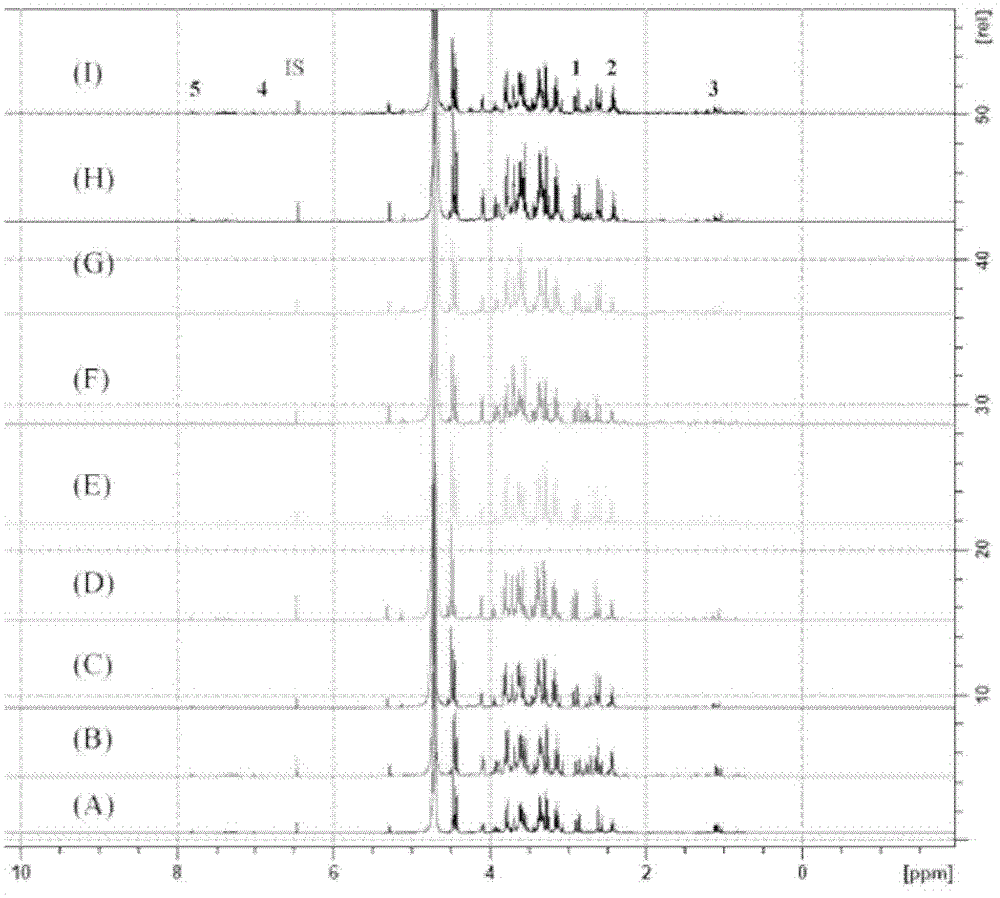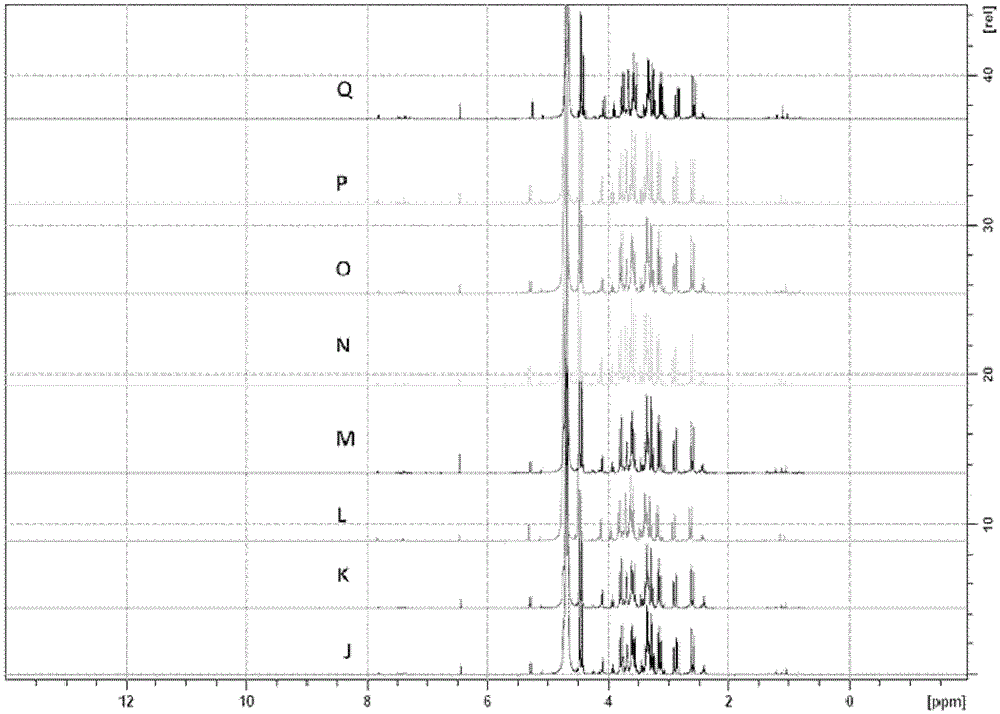Quantitative analysis method and separation method of glucosides from Auranthus chinensis
A technique for quantitative analysis and clematis sugar, which is applied in the field of separation of clematis glucoside compounds, can solve the problems of temperature sensitivity, poor detection sensitivity, unstable baseline of RI detector, etc., and achieve the effect of fast and simple separation and simple solvent system.
- Summary
- Abstract
- Description
- Claims
- Application Information
AI Technical Summary
Problems solved by technology
Method used
Image
Examples
Embodiment 1
[0037] Fresh clematis plants were shredded and extracted three times with methanol at room temperature by cold immersion, the three methanol extracts were combined, the solvent was evaporated under vacuum and the solvent was concentrated to obtain a crude extract. Clematis clematis capsules (pcs) and tea bags (bags) are extracted in the same way after removing the packaging.
[0038] Take 100 mg of the aforementioned crude extract and dissolve it in 3 mL of secondary deionized water, and perform sample pretreatment with DiaionHP-20 column (4.0 × 30 cm) chromatography, and the eluents are H 2 O (200mL, AF-I), H 2 O-MeOH (7:3 volume, 300mL, AF-II) and H 2 O-MeOH (1:1 volume, 300 mL, AF-III). AF-II was collected, 0.5 mg fumaric acid internal standard was added and concentrated.
[0039] Add AF-II to 0.6mLD 2 After O was completely dissolved, proton NMR analysis was carried out ( 1 HNMR), and recorded with BrukerAVANCEIII400MHz 1 HNMR spectrum. 100 scans were recorded for e...
Embodiment 2
[0058] The AF-II eluate of Example 1 was collected and concentrated, and then separated again with DiaionHP-20 reverse chromatography column (4.0×30em). Dissolve the concentrate in H 2 O, and then filled in the column (the ratio of sample weight to column filling is 1:100), with H 2 After O (100ml) was used as the eluent to remove highly polar compounds, H 2 O:MeOH (8:2) (300ml) was extracted, and one bottle was collected every 50mL. Repeat embodiment 1 to collecting every bottle of eluate 1 HNMR analysis (no fumaric acid was added), the 3rd to 4th bottle 1 The HNMR spectrum is shown in Figure 4 . Figure 4 The signal peak at the chemical shift of figure 1 The compound 1 in the same, proves wherein the 3~4 bottle after concentration promptly obtains the aureoside (kinsenoside) compound with following chemical formula 1:
[0059]
PUM
 Login to View More
Login to View More Abstract
Description
Claims
Application Information
 Login to View More
Login to View More - R&D
- Intellectual Property
- Life Sciences
- Materials
- Tech Scout
- Unparalleled Data Quality
- Higher Quality Content
- 60% Fewer Hallucinations
Browse by: Latest US Patents, China's latest patents, Technical Efficacy Thesaurus, Application Domain, Technology Topic, Popular Technical Reports.
© 2025 PatSnap. All rights reserved.Legal|Privacy policy|Modern Slavery Act Transparency Statement|Sitemap|About US| Contact US: help@patsnap.com



